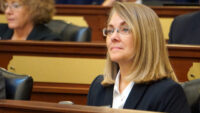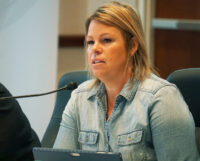Idaho’s education leaders and stakeholders have invested in — or considered — a range of measures aimed at improving the academic achievement of students in poverty.
- Expanding public school to children as young as 4 years old.
- Making college more accessible and affordable.
- Changing the way the state funds schools, so more money flows to students with more needs.
Some areas have garnered more attention and tax dollars than others. For example, the 2019 Legislature doubled funding to help young children who are not reading at grade level.
But lawmakers and education leaders remain mixed over what reduces the achievement gap (the lingering difference in outcomes between disadvantaged and non-disadvantaged kids). Some tout the need for more money in specific areas, while others say the problem transcends funding alone.

“It’s not just about money,” said Rep. Wendy Horman, a prominent Idaho lawmaker and state budget writer. “It’s also about things like (school) leadership and a no-excuses culture.”
Will investing in early learning improve outcomes?
Improving reading and writing was Gov. Brad Little’s oft-repeated top priority for his first legislative session. The Legislature endorsed the idea and increased funding for Idaho’s K-3 literacy initiative to $26 million.
Idaho funds only half-day kindergarten, and the state does not fund pre-kindergarten. Some administrators will use their literacy money on all-day kindergarten.
“It’s huge for helping our students in poverty,” said Murtaugh district Superintendent Michele Capps, whose high-poverty, high-performing district has provided pre-K for more than a decade. (Click here for more on what Murtaugh does to defy the odds.)

Rep. Paul Amador, R-Coeur d’Alene, and Idaho Business For Education President Rod Gramer pushed a bill this legislative session to start a state-funded, voluntary pre-K program. The House Education Committee killed the bill before it could be formally introduced, citing limited funds and questioning the value of using taxpayer dollars to “teach 4-year-olds to play.”
Is college affordable or accessible?
College in Idaho is relatively affordable, compared to other states.
But the costs keep going up.
Idaho ranks in the Top 10 for college affordability, according to the College Board, but tuition has gone up 11 percent in five years.
The rise is part of a continuing cost shift, and it doesn’t appear to be slowing down. In April, the State Board of Education approved another tuition and fee hike at state colleges and universities. The increase across the four-year institutions will average slightly more than $400.
New State Board president Debbie Critchfield acknowledged the impacts on families. She wrote an op-ed stating that tuition hikes should occur less frequently. She vowed to work with colleges and universities to curtail future increases.

Still, Critchfield said, families shouldn’t discount the value of a college education.
“Students and parents are frustrated with rising costs, but a college diploma still has a strong return on investment,” Critchfield wrote. “A bachelor’s degree is worth about $1 million more in lifetime income compared to a high school diploma.”
Should Idaho give more money to schools with high poverty?
Idaho uses average daily attendance to divvy up school dollars. More students in school, more money. Idaho does not provide additional dollars to schools that serve higher concentrations of students in poverty.
Should that model change?
Idaho allocates nearly the same amount of funding to its highest and lowest poverty districts, according to a 2015 state-by-state analysis by school-equity watchdog The Education Trust. Thirty states provide at least some extra funding to high-poverty districts, the analysis found. Utah topped the list for school equity, with its highest poverty schools receiving 21 percent more money than its lowest poverty schools. Illinois’ high-poverty schools receive 22 percent less than its lowest poverty schools.
These types of inequities are “foundational to all sorts of other inequities in our school system,” the study concluded.
The Legislature’s Public School Funding Formula Committee spent three years examining ways to overhaul Idaho’s funding model. During the 2019 session, legislators produced a draft bill to funnel extra funds to high-poverty schools. On top of a base amount of $4,294 for every public school student, the bill included “weights” for allocating more dollars to certain student subgroups, including those deemed “economically disadvantaged.”
But a slew of stakeholder concerns stalled the process — including questions about how to define an economically disadvantaged student. The proposal died in committee, and it’s unclear whether lawmakers will take a similar approach to revamping the formula in 2020.
A new K-12 task force
To a large degree, the future of Idaho’s public education is in Little’s hands.

This summer, Little will appoint two new members to the State Board of Education. Plus, his newly formed K-12 task force has been charged with delivering recommendations ahead of the 2020 legislative session.
Critchfield and Boise business leader Bill Gilbert chair the 26-member “Our Kids, Idaho’s Future” group, made up of education advocates, educators, legislators, business leaders and parents.
Little wants the group’s input by November in order to allow his office to review budget implications and develop implementation strategies for the session.
It’s too early to say what the group’s recommendations will look like, but Little has so far emphasized two major themes: literacy and college and career readiness.
